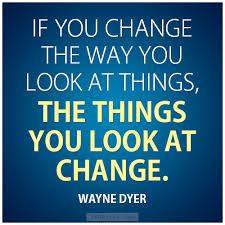Doctor’s Praise
Have you ever had a doctor’s appointment during which you get praise from said doctor?
This was a completely foreign concept for me until recently, despite having lived with Type 1 Diabetes for 29 years.
But as I’ve managed to gain better insight into the illness that co-habits my body, and therefore slightly better control, there have been more and more positive encouragement coming form my health team.
Just a couple of years ago, I would always be scared of going to the doctors, any doctor I have (and I have a few).
Scared of the results, scared of what they might find this time.
Scared of being told off, scared of being disappointed in myself.
Scared of being hurt and a failure. Scared of the amount of work that lay ahead of me.
Because that’s what it had been like all my life.
Every doctors appointment until recently, had been one of disappointment, hurt, even tears, and after, not-being-bothered – because why bother if I always get the same sh*t shoved at me by the doctors?
Let’s not turn this into too much of a sobby victim story though.
About a year ago, when I had finished the education for my pump with my lovely diabetes educator, she told me I was one of her best patients.
After having grown up with the notion that doctors (and nurses) are equal to the evil spawn of something ugly, I was stunned for a second.
And then filled with love. Love, gratitude, and appreciation.
Not necessarily for diabetes, but rather for the advancements I had made by that point.
It was probably my first (and to this day, only) time I’ve performed a little one-man boogie in a doctor’s office.
It’s incredibly what a little doctor’s praise can do!
It spurs you on, keeps you going and at least it helps me when the going gets extra tough (which it inevitably does, considering it’s diabetes we’re talking about.)
And then today (aka the-second-time-my-jaw-dropped-through-the floor-at-my-doctor’s-office), at my check up, my doctor goes to me: “you’re one of my best patients. You seem much more relaxed about diabetes now than when I first met you.”
Wait? Did I hear that correctly?
My immediate reaction was to ask if she could put it in writing. She answered that she would if I really wanted her to.
To the point: yes. That might very well be true that I am, as I don’t know a single of her other patients. And I’m super grateful that I’ve managed to get to where I am today.
But I don’t think she has any idea of just how much work I’ve put into gaining this clarity I now have of diabetes. Which doesn’t, by any means, I’m anywhere near full understanding of it. It just means that I’ve made some progress in the recent years.
A few examples:
I’ve had to say no to things I really wanted to do because my blood sugar wasn’t cooperating.
There have been some late nights…
,,,,and early mornings…
…including wake ups in the middle of the night.
A copious and endless amount of (painful) finger pricks, injections, pump site insertions and CGM sensor insertions.
Carrying medical equipment around, big handbags have been of benefit. My shoulders and neck muscles do not agree.
Snacks, snacks and more snacks.
A huge part has been the mental work I’ve done. Truly coming to terms with diabetes is not an easy task, and is usually completely overlooked by the medical community. I’ve meditated for hours, and now I notice a difference in my blood sugars when I don’t do it! Stress is closely linked to blood sugars, so it’s really important to find ways to release stress. A newer tool I’ve been using is EFT tapping to try to get past the bigger concerns regarding diabetes.
Eating well and according to diabetes, which, for me, means very low carb.
Having to play my own pancreas. On the outside. With zero communication from the other organs that play a part, like the liver, for example.
Drinking lots of water. I’d be so rich if I had a penny for every liter of water I’ve drank!
Exercising and trying to figure out how it works. Sometimes exercise makes my blood sugar high, sometimes low, sometimes the same and sometimes the effect doesn’t come until 12 hours later (depending on how strenuous the exercise was). What on earth do I do with my basal settings?!
Speaking of which, figuring out everyday things like flights, how to eat on the road, restaurants, walking too much (and at irregular times!), drinking alcohol, combining an outfit to fit medical devices as well as how to solve the caffeine question, have all been part of the journey so far.
And that’s just to say what it has taken so far. It definitely doesn’t mean that it will always stay the same. Diabetes is a very dynamic and constantly ever-changing partner to have by your side.
But, this is where it really pays off to have a carefully selected and well-researched health team.
Because even if they don’t know exactly what you’re going through, they’re willing to understand and make arrangements for you.
Oh, yeah, my A1C? 6.4% today.
















